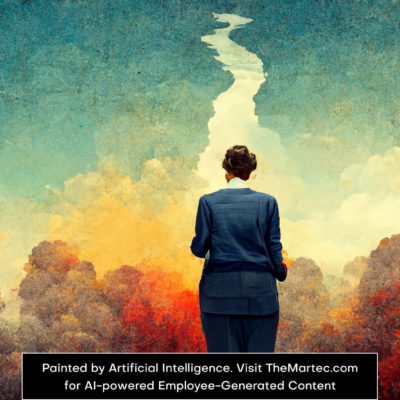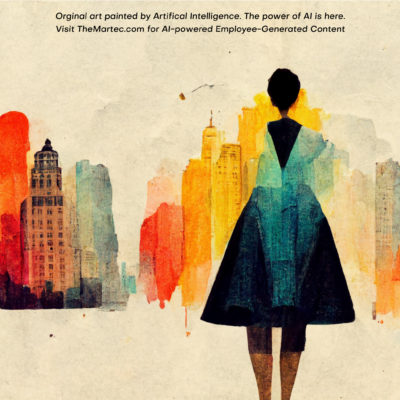
October 7, 2020 • 5 min read
How to Build an Employer Brand by Drawing Out Employee Experiences
There’s authentic employer branding, and there’s effective employer branding. By no means are the two mutually exclusive, but they should be thought of as separate entities working together.
Strong, effective and clear brands are predicated on strong, effective and clear value propositions, which in turn are predicated on research. In order to be authentic, an organization needs to have a deep understanding of itself, gained through internal research. How else will recruiters be able to pitch the realities of your workplace to candidates?
To be effective,you need to gain an understanding of the market. What drove candidates five, three or even one year ago might not be what drives them today. If 2020 has taught us anything, it’s that things can change quickly.
Gaining this understanding will allow you to build a comprehensive employer value proposition; one that is reflective of your employee experience, and easily translated to the recruitment market.
The power of first-hand employee experiences
The crux of content marketing is that people don’t place faith in marketing spin, but in the genuine stories of genuine people. In employer branding, it’s far more powerful to have an employee share their experience than to have a recruiter tell you what life at an organization should be like.
In employer branding, it’s far more powerful to have an employee share their experience than to have a recruiter tell you what life at an organisation should be like.
Recently, one of our customer service representatives shared with me a story of an elderly woman who came into a retail location. She didn’t understand how digital banking worked, so the rep took an hour out of her day – we are proud to offer our people the discretion to do that – to sit down with this person and help them.
This was the story of a 75-year-old woman who left the store thrilled, feeling like someone valued her enough to take the time to teach her and didn’t dismiss her potential to learn new technology. Plus, she now knows how to deposit checks using her phone. It’s also the story of a customer service rep who felt really good about themselves because they were able to help someone in need. Add in the self-isolation requirements of a global pandemic, and it’s also a story of this rep helping someone’s grandmother stay safe and secure in their home.
In employer branding, each of these perspectives helps form a different pillar of the story. At TD, we’re trying to activate the pillars of ‘Impact’, ‘Growth’ and ‘A Culture of Care’ – this story highlights two of them, demonstrating that we’re having an impact on the lives of our customers, our employees, and the communities in which we serve and the way in which we do it that builds/reinforces our Culture of Care.
Using pillars to target and source employee stories
Finding features of the employee experience that align with certain target pillars will help you to drive the most authentic and effective employer branding content possible. It’s vital that you identify the attributes of your pillars, and make sure that everything you’re trying to accomplish, capture and promote aligns with them.
Finding features of the employee experience that align with certain target pillars will help you to drive the most authentic and effective employer branding content possible.
Focus on the specific employer value proposition pillars that you’re trying to activate. Work on capturing and promoting relatable stories that serve as proof. Capture disparate and niche stories, as this will allow you to produce more targeted and meaningful content. We’re looking at activating Impact, Growth and a Culture of Care, so some of the questions we ask ourselves and our team members are:
- What impact does our retail banking have?
- What impact does our risk department have?
- What impact does our corporate citizenship and social responsibility department have?
- What are the growth opportunities in retail?
- What does growth look like in corporate?
- How do we demonstrate a culture of care in our contact centers?
- How might things differ in our Wealth or Lending divisions?
If we’re then putting together a recruitment marketing campaign to hire more call center staff and want to base it around ‘Impact’, we can then go to this body of work and source meaningful stories and, more importantly, extend the reach of these stories beyond the call center demonstrating how small actions can help teams, departments and the organization holistically.
This helps to create not just a perception of unity to candidates, but a tangible sense of actual unity within the organization.
Consistency is key
A consistent message needs to be delivered when talking about an open role, whether it’s coming from recruiters and candidate experience teams, or from onboarding facilitators and trainers.
And the messaging shouldn’t stop once a new employee joins the team. To tell great stories, you first need to create them, so continuing to share the experiences of individuals with the rest of the team will ensure that a steady supply of employer branding material is at your disposal, and that the promises made to new talent when they joined are followed through on.
A consistent message needs to be delivered when talking about an open role, whether it’s coming from recruiters and candidate experience teams, or from onboarding facilitators and trainers.
An EVP shouldn’t simply be a talent acquisition tool – it’s something that every employee’s experience should be built around. The EVP circle must continuously be fed.

The importance of working together
When you boil it down, employer branding and employee experience teams are not just rowing in the same direction – they’re in the same boat. They need to work closely together, as there’s no way to maintain an external brand if it’s not backed up by the internal experience (and not just because Glassdoor won’t let you!)
When you boil it down, employer branding and employee experience teams are not just rowing in the same direction – they’re in the same boat.
Never before has there been such transparency around workplaces as there is today. Employee experiences both good and bad aren’t just shared with friends and loved ones – they’re shared with the world. If a brand fails to be honest and authentic, it’s doomed to fail.
Internal teams need to sit down together and map out a plan of attack. They need to develop an EVP, create pillars and collect stories. They need to feed information to each other, whether about learning and development, diversity and inclusion, employee experience, or wellness and benefits, to stay informed and enhance their offering.
It’s the accumulation of individual experiences that develop your culture, and the holistic employee experience that drives your employer brand. And you get out of both what you’re prepared to put in.
About the author: Devin has spent the last decade in employer branding and recruitment marketing, from consulting to in-house to agency and back again. From EVP development, to managing the execution/activation of employer brand strategies to developing thought leadership in the field as it evolves along with technological advances and changes to the employment landscape, he lives and breathes employer brand and employee experience!



